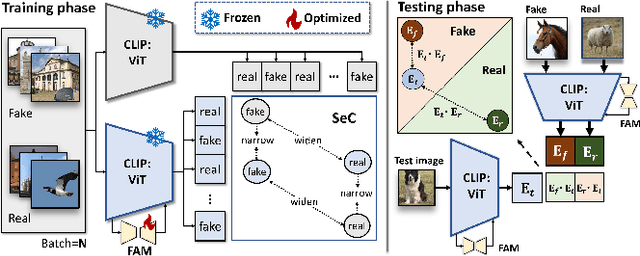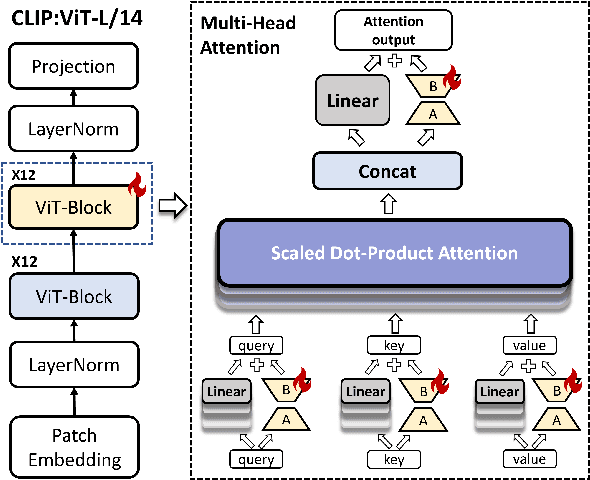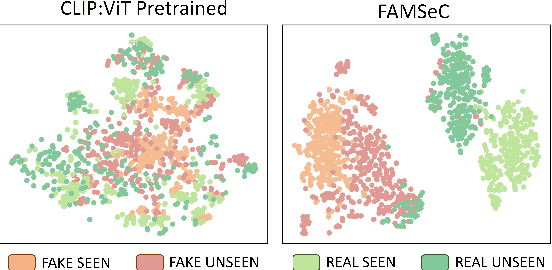FAMSeC: A Few-shot-sample-based General AI-generated Image Detection Method
Paper and Code
Oct 17, 2024



The explosive growth of generative AI has saturated the internet with AI-generated images, raising security concerns and increasing the need for reliable detection methods. The primary requirement for such detection is generalizability, typically achieved by training on numerous fake images from various models. However, practical limitations, such as closed-source models and restricted access, often result in limited training samples. Therefore, training a general detector with few-shot samples is essential for modern detection mechanisms. To address this challenge, we propose FAMSeC, a general AI-generated image detection method based on LoRA-based Forgery Awareness Module and Semantic feature-guided Contrastive learning strategy. To effectively learn from limited samples and prevent overfitting, we developed a Forgery Awareness Module (FAM) based on LoRA, maintaining the generalization of pre-trained features. Additionally, to cooperate with FAM, we designed a Semantic feature-guided Contrastive learning strategy (SeC), making the FAM focus more on the differences between real/fake image than on the features of the samples themselves. Experiments show that FAMSeC outperforms state-of-the-art method, enhancing classification accuracy by 14.55% with just 0.56% of the training samples.
 Add to Chrome
Add to Chrome Add to Firefox
Add to Firefox Add to Edge
Add to Edge